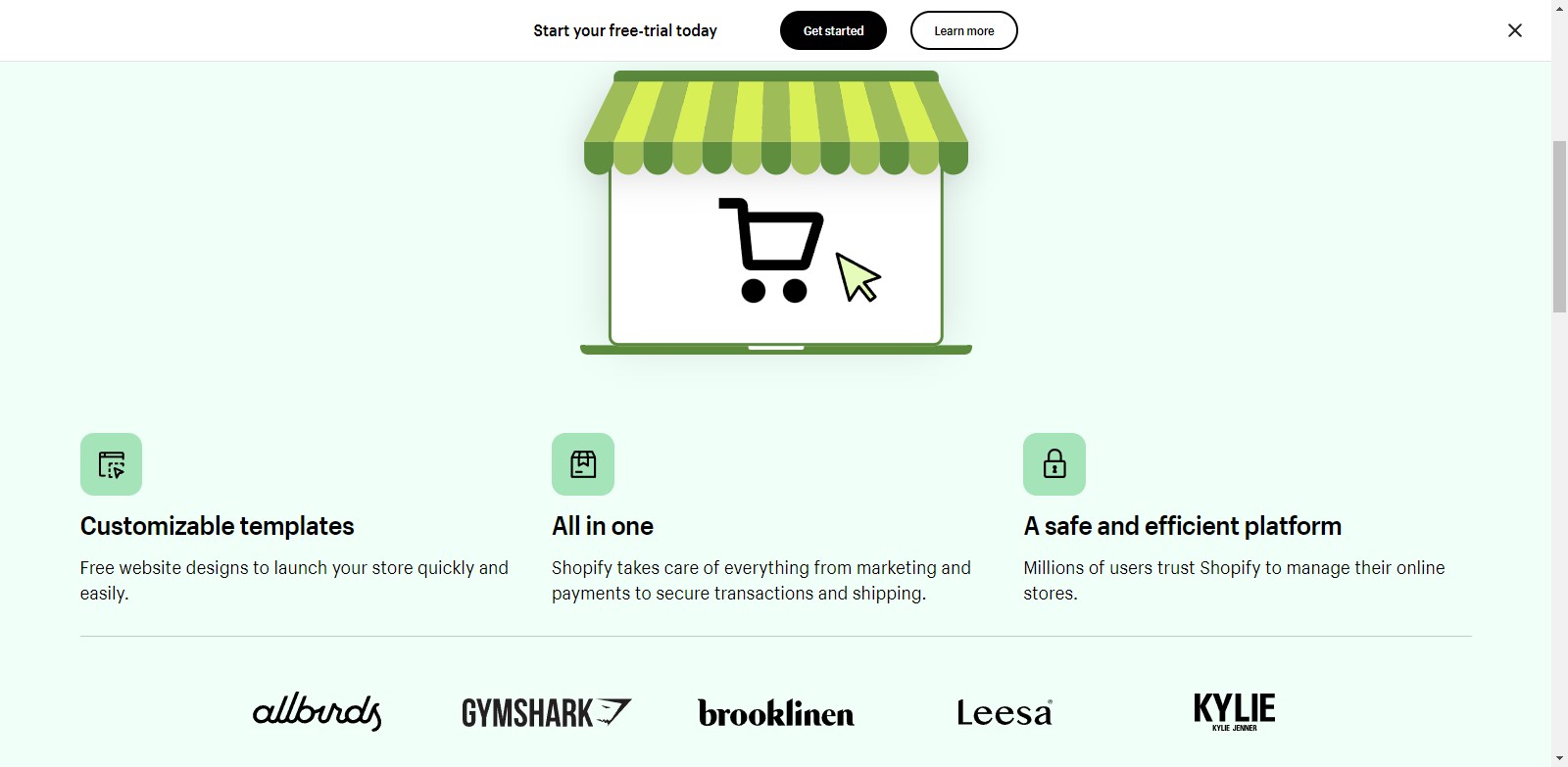Are you ready to take your business to the next level? Look no further than Shopify – the ultimate tool for launching and growing your online empire! With its user-friendly interface and powerful features, Shopify has become the go-to platform for entrepreneurs around the world. Whether you’re just starting out or looking to expand your existing business, Shopify provides everything you need to succeed in today’s competitive market. So buckle up and get ready to discover how this incredible platform can revolutionize your entrepreneurial journey!
The Different Types of Shopify Accounts
When it comes to Shopify, there are several account options available to cater to different business needs. Let’s explore the different types of Shopify accounts and what they have to offer.
1. Basic Shopify: As the name suggests, this is the basic plan that provides all essential features for starting a small online store. It includes unlimited products, 24/7 customer support, and access to various sales channels.
2. Shopify: This mid-tier plan offers additional features like gift cards, professional reports, and abandoned cart recovery. It’s perfect for growing businesses that need advanced tools to optimize their operations.
3. Advanced Shopify: Designed for high-volume businesses or those with complex needs, this plan provides advanced reporting capabilities and lower transaction fees compared to other plans.
4. Shopify Plus: Geared towards enterprise-level businesses, this top-tier plan offers customizations and dedicated support from an account manager. It also enables multi-channel selling and integration with third-party systems.
Each type of account has its own pricing structure based on your business requirements – whether you’re just starting out or scaling up rapidly.
With these different account options in place, you can choose the one that aligns perfectly with your business goals and budgetary constraints. So why wait? Dive into the world of e-commerce by selecting the ideal Shopify account for your venture!
Pros and Cons of Using Shopify
When it comes to launching and growing your business, Shopify is a powerful tool that can streamline the entire process. However, like any platform, it has its pros and cons.
One major advantage of using Shopify is its user-friendly interface. Even if you don’t have much technical knowledge or experience, you can easily set up your online store with just a few clicks. The platform provides a wide range of customizable templates and themes, allowing you to create a professional-looking website without the need for coding skills.
Another benefit of Shopify is its extensive app store. With thousands of apps available, you can enhance your store’s functionality by adding features such as customer reviews, social media integration, and email marketing tools. Additionally, Shopify offers reliable hosting and security measures to keep your customers’ data safe.
On the flip side, one potential drawback of using Shopify is the monthly subscription fees. While there are different pricing plans available to suit various budgets and needs, these costs can add up over time. Moreover, certain advanced features may require additional payments or upgraded plans.
Another limitation is limited customization options compared to self-hosted platforms like WordPress. Although Shopify allows customization within their framework using themes and apps – deep-level customizations often require in-depth knowledge of Liquid programming language.
In conclusion,
Shopify presents numerous advantages for entrepreneurs looking to establish an online presence quickly and efficiently.
However,
it’s important to weigh both the benefits and drawbacks before deciding whether this platform aligns with your specific business goals
How to Use Shopify to Start Your Business
Starting a business can be a daunting task, but with Shopify, the process becomes much simpler. Here’s how you can use Shopify to kickstart your entrepreneurial journey.
Sign up for a Shopify account and choose the plan that suits your needs. There are different types of accounts available, ranging from basic to advanced features. Once you’ve selected your plan, you’ll be ready to dive into creating your online store.
Next, customize your store’s appearance by selecting a theme from Shopify’s extensive collection. You can choose from various professionally designed templates or even create your own unique look.
Once you have chosen a theme, it’s time to add products to your store. With Shopify’s user-friendly interface, you can easily upload product images and descriptions. Organize them into collections and set prices accordingly.
To ensure smooth transactions with customers, integrate payment gateways like PayPal or Stripe into your Shopify store. This will allow customers to make secure payments without hassle.
Now that everything is set up, it’s time to market and promote your online store. Utilize social media platforms like Facebook and Instagram to showcase products and engage with potential customers. Take advantage of email marketing campaigns as well by utilizing built-in tools within the platform.
Regularly analyze sales data using Shopify analytics tools so that you can make informed decisions about future strategies for growing your business.
Using these steps as guidance will help maximize the potential of launching and growing an e-commerce business on Shopify!
Shopify Alternatives
While Shopify is undoubtedly a powerful and popular platform for launching and growing your online business, it’s important to explore all your options before making a final decision. Here are some alternative platforms worth considering:
1. WooCommerce: If you already have a WordPress website or prefer the flexibility of an open-source solution, WooCommerce may be the right choice for you. It offers extensive customization options and integrates seamlessly with WordPress.
2. BigCommerce: With features like built-in SEO tools and multi-channel selling capabilities, BigCommerce is another robust option for e-commerce businesses. It also boasts impressive scalability to accommodate growth.
3. Magento: Known for its advanced functionalities, Magento is preferred by larger enterprises looking for highly customizable solutions. However, it requires more technical knowledge compared to other platforms.
4. Wix: Ideal for small businesses or beginners who want an easy-to-use platform with drag-and-drop functionality, Wix provides beautiful templates and various e-commerce features.
5. Square Online Store: For brick-and-mortar stores looking to expand their reach online, Square Online Store offers seamless integration with in-person sales systems and efficient inventory management tools.
Each of these alternatives has its own strengths and weaknesses depending on your specific needs as an entrepreneur. Take the time to research them thoroughly before making your final decision.
Remember that choosing the right e-commerce platform plays a crucial role in setting up your business for success from day one. Consider factors such as pricing plans, ease of use, customizability, scalability options, integrations with third-party apps/tools, customer support quality, and overall user experience when evaluating each platform.
In conclusion (without using those exact words), Shopify remains one of the leading choices among entrepreneurs worldwide when it comes to launching their online ventures quickly and efficiently. Its intuitive interface combined with a wide range of features makes it accessible even to those without technical expertise.
By utilizing Shopify’s various account types – Basic Shopify (ideal for beginners), Shopify (for growing businesses), and the advanced Shopify Plus –


















